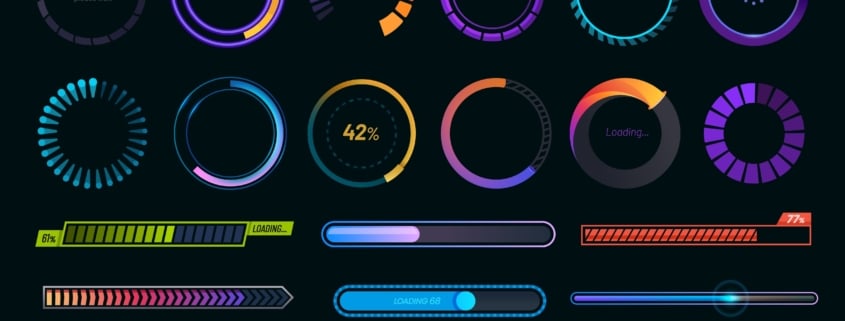Unleash the Potential of Microinteractions for Superior User Experiences in 2024
Introduction:
As the digital landscape evolves, keeping users engaged and invested in your website becomes an increasingly challenging task. One emerging element that holds immense potential in elevating user experiences and driving conversions is the strategic use of microinteractions. In this article, we’ll delve into the concept of microinteractions, examine their impact on user engagement and conversion rates, and offer practical tips on effectively designing and implementing these subtle yet powerful design elements in your website in 2024.
Microinteractions refer to small, functional interactions users have with a website, often triggered by single actions or events. They can take various forms, such as animations, input feedback, or state changes that create a more dynamic and engaging user experience. Microinteractions not only enhance functionality but also provide instant visual feedback and context to users, helping them navigate through your website smoothly while fostering a sense of delight and accomplishment.
By thoughtfully incorporating microinteractions into your website design, you can create a richer, more immersive user experience that stands out in today’s digitally saturated environment. Well-designed microinteractions can help guide users, clarify actions, offer feedback, and provide a sense of achievement, all of which contribute to higher user satisfaction, engagement, and conversions.
In the subsequent sections, we will uncover the various benefits of harnessing microinteractions in web design, discuss how they can transform user experiences, and present practical examples and guidance on successfully incorporating them into your digital strategy.
The Transformative Benefits of Microinteractions
When designed and implemented thoughtfully, microinteractions offer numerous advantages that enhance your website’s usability, user engagement, and conversion rates. Let’s explore some key benefits of microinteractions:
- Improved User Experience: Microinteractions make websites more responsive and intuitive, allowing users to navigate with ease.
- Enhanced Usability: They provide instant feedback on user actions, ensuring that users understand the consequences of their interactions.
- Increased Engagement: Microinteractions can add an element of delight to your website, making the experience more enjoyable and increasing user engagement.
- Better Conversions: By guiding and reassuring users, microinteractions can foster trust and credibility, ultimately boosting conversion rates.
Designing Effective Microinteractions: Best Practices
Creating meaningful and impactful microinteractions demands a thoughtful approach that balances aesthetics with functionality. Here are some best practices to follow when designing microinteractions:
- Focus on Function: Ensure that every microinteraction has a clear purpose and adds value to the user experience.
- Keep It Simple: Microinteractions should be subtle and unobtrusive, complementing your site’s design and content without overwhelming users.
- Ensure Consistency: Align microinteractions with your brand identity and design language, maintaining a cohesive and recognizable aesthetic across your website.
- Prioritize Accessibility: Design microinteractions that cater to various user needs and abilities, making your website accessible to a broader audience.
Noteworthy Microinteraction Examples
Now that we’ve explored microinteraction benefits and best practices, let’s discuss some examples showcasing their power to transform user experiences:
- Animated Buttons: Simple button animations, like hover effects or subtle color transitions, can increase user engagement by indicating interactivity and providing feedback on user actions.
- Progress Indicators: Visual progress indicators, like loading animations or progress bars, can add transparency and reassurance, ensuring users understand that their action is being processed.
- Form Validation: Real-time form validation can provide immediate feedback on input errors, helping users understand and rectify mistakes for a smoother experience.
- Drag-and-Drop Interactions: Integrating drag-and-drop functionality can make complex tasks, like file uploads or sorting elements, more intuitive and engaging.
Seamless Integration of Microinteractions Into Your Website
As valuable as microinteractions are, it’s essential to integrate them seamlessly into your site’s overall design and functionality. Adopt the following strategies to ensure a smooth implementation:
- Collaborate With Developers: Involve your development team early in the design process to ensure that microinteractions can be feasibly integrated into your website’s existing structure.
- Test and Optimize: Conduct thorough testing and optimization of microinteractions across various devices and browsers, guaranteeing a seamless experience for all users.
- Analyze User Behavior: Gather user feedback and analyze usage data to gauge the effectiveness of your microinteractions and uncover opportunities for improvement.
- Stay Up-to-Date: Continuously track industry trends and best practices, iterating and refining your microinteractions to remain at the forefront of design innovation.
Harnessing Microinteractions for an Unforgettable User Experience
In a rapidly evolving digital landscape, microinteractions provide immense potential for transforming user experiences and driving conversions. By incorporating these subtle yet powerful design elements into your website, you can create engaging, functional, and delightful user experiences that set your brand apart.
As an industry-leading web design agency in Las Vegas, our team at Once Interactive is skilled in the art of creating innovative, user-centric experiences that resonate with your target audience and drive measurable results. Contact us today and let us help you elevate your website’s user experience through the strategic use of microinteractions.






